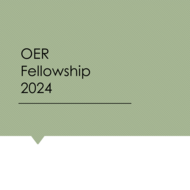
(View Complete Item Description)
These six interactive modules help researchers, data stewards, managers and the public gain an understanding of the value of data management in science and provide best practices to perform good data management within their organization.
Acknowledgments
The USGS Data Management Training modules were funded by the USGS Community for Data Integration and the USGS Office of Organizational and Employee Development's Technology Enabled Learning Program in collaboration with Bureau of Land Management, California Digital Library, and Oak Ridge National Laboratory. Special thanks to Jeffrey Morisette, Dept. of the Interior North Central Climate Science Center; Janice Gordon, USGS Science Analytics and Synthesis; National Indian Programs Training Center; and Keith Kirk, USGS Office of Science Quality Information.
Cite: U.S. Geological Survey, 2021, USGS Data Management Website: U.S. Geological Survey, https://doi.org/10.5066/F7MW2G15.
Material Type:
Module,
Primary Source



















